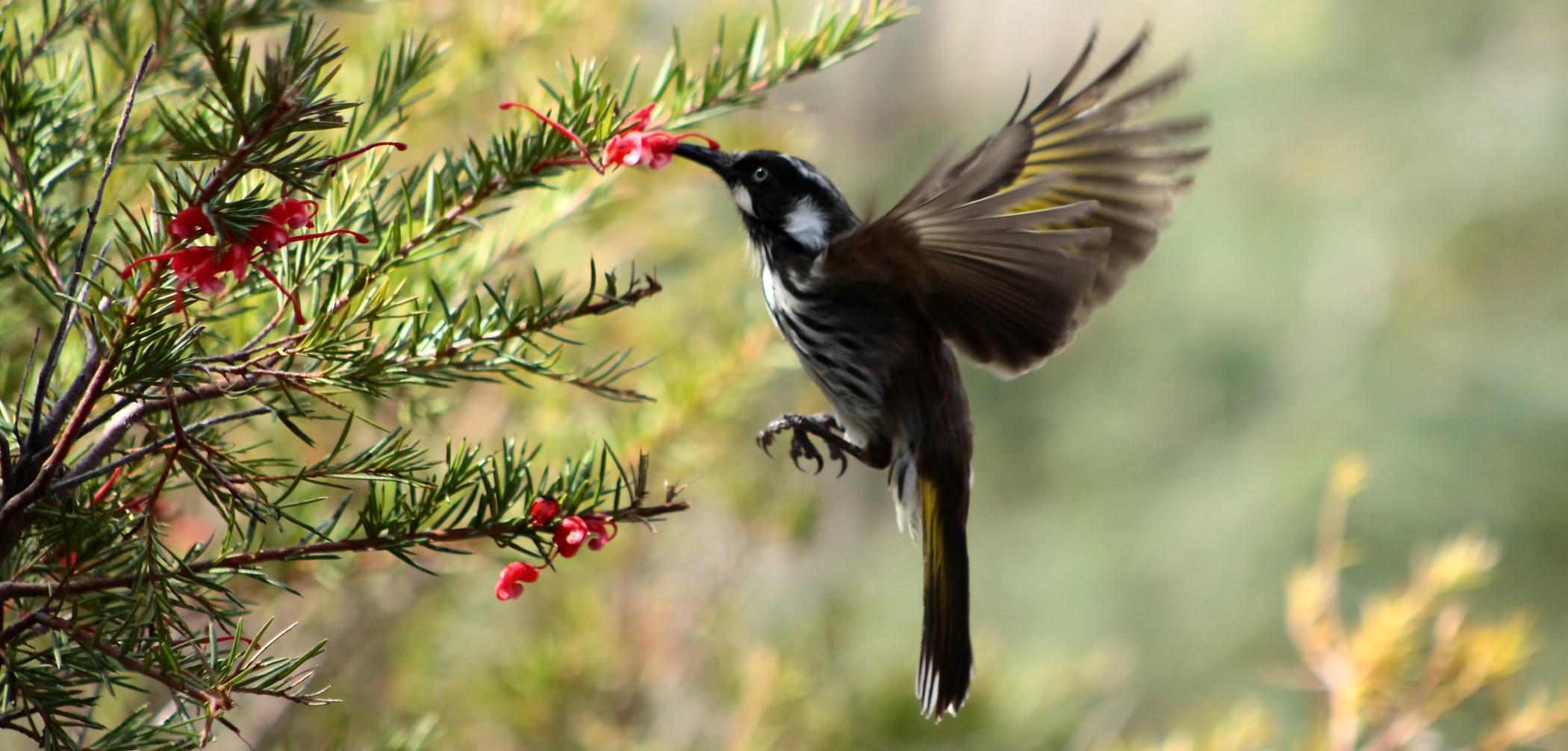It’s not surprising that grevilleas have gained popularity with local gardeners and landscapers. They tick the 'native’ box and the hybrid varieties display large showy flowers in bloom most of the year. Sadly, hybrid grevilleas are now known to be contributing to local extinctions of small bird populations. In this story, we unpack why, and how by using a diversity of shrub species and vegetation structure, as well as providing water and a pesticide-free environment, you can help all wildlife thrive.
Hybrid grevilleas favour larger birds, pushing small ones out
For many years, bird lovers and plant nurseries have encouraged us to ‘plant native species for native birds’, with limited thought given to the complex interactions between different bird species and plant varieties in the wild and in our gardens. It’s this lesson from nature that’s teaching us why some birds are flourishing, and others are disappearing from our neighbourhoods.
Hybrid grevilleas are very popular with larger native honey-eating birds such as Rainbow Lorikeets, Noisy Miners and Wattlebirds. The large, robust, easy to access flowers suit these birds with their larger beaks and long tongues.
Hybrid Grevilleas have a long flowering season, which means that these birds can stay in one area for a long time – sometimes permanently, when previously they would have moved around the landscape following the seasonal flowering of other nectar producing natives such as eucalypts and banksias.
Whilst all these birds are native, they tend to dominate any territory where plants like hybrid grevilleas grow, actively chasing out and excluding smaller birds from these territories. The result has been that we have lost many populations of these smaller birds from our urban landscapes, including smaller nectarivores such as New Holland Honeyeaters and Eastern Spinebills, small granivores (seed eaters) such as the Red-browed Finch, and especially small insectivores like Robins, Pardalotes, Thornbills, Scrub-wrens and Superb Fairy-wrens. These population losses are known as local extinctions.
Local Sydney grevillea are better suited to smaller birds
Local Sydney grevilleas with their small and more secluded flowers, suit the anatomy and needs of smaller birds. They are typically smaller plants and have spider-shaped flowers on the inside of the plants. They are less attractive to larger birds and can provide shelter and food for smaller honeyeaters such as the New Holland Honeyeater and Eastern Spinebill. Small insectivorous birds such as the Superb Fairy-wren, also love these plants and feed on insects which are attracted by the nectar. Eastern Sydney’s local grevillea is the Grevillea speciosa – Red Spider Flower Grevillea.
What can you do to help small bird populations?
Smaller birds thrive where there is a diversity of shrub species, dense vegetation to hide in, as well as pesticide-free environment with clean water.
- Create dense shrubbery that they can hide and nest in, safe from predators.
Think about the structure of the vegetation. Choose a variety of shrubs, being sure to include both those that branch close to the ground, such as coastal rosemary, as well as taller shrubs, to ensure continuous dense vegetation from the ground up. Consider a range of plants that flower at different times of the year and give them a regular light prune to create denser shrubs.
- Keep gardens pesticide-free and provide water
Avoid using any pesticides, particularly insecticides – even the ‘natural’ and ‘organic’ ones. If you can attract insect-eating birds to your garden, this helps restore the insect balance. Rememberthat the best thing you can do for wildlife in your garden is to provide clean and regular water that is safe from cats and larger birds, such as installing a bird bath next to shrubs.
- Avoid planting hybrid grevilleas
Particularlythose with large flowers hanging on the outside of the plant, especially those with red, orange and bright pink flowers. These include, ‘Moonlight’, ‘Superb’, Honey Gem and ‘Sandra Gordon’. The species that these grevilleas are bred from are native to Northern Australia, not NSW.
- If you are super keen on grevilleas, plant small flowering types
Choose grevillea species with small compact flowers e.g. Grevillea speciosa, Grevillea buxifolia – Grey Spider flower, Grevillea lineariifolia – White Spider Flower, Grevillea mucronulata – Green Spider Flower, and Grevillea sericea – Pink Spider Flower. These are a much better choice than the hybrid grevilleas for Sydney gardens wishing to have a diversity of bird species. However, they are not essential to small bird habitat.
Author: Sue Stevens Urban Ecology Co-ordinator, Waverley Council.
2 February 2021


